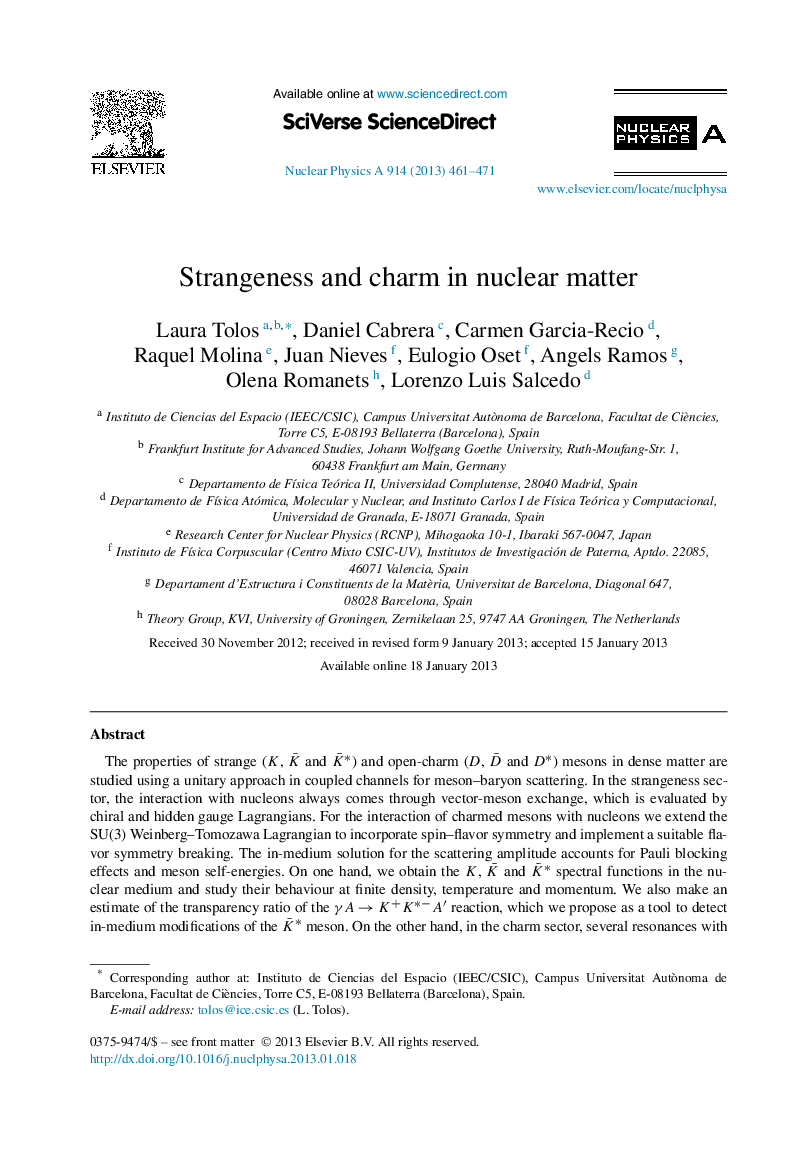| Article ID | Journal | Published Year | Pages | File Type |
|---|---|---|---|---|
| 8183800 | Nuclear Physics A | 2013 | 11 Pages |
Abstract
The properties of strange (K, K¯ and K¯â) and open-charm (D, D¯ and Dâ) mesons in dense matter are studied using a unitary approach in coupled channels for meson-baryon scattering. In the strangeness sector, the interaction with nucleons always comes through vector-meson exchange, which is evaluated by chiral and hidden gauge Lagrangians. For the interaction of charmed mesons with nucleons we extend the SU(3) Weinberg-Tomozawa Lagrangian to incorporate spin-flavor symmetry and implement a suitable flavor symmetry breaking. The in-medium solution for the scattering amplitude accounts for Pauli blocking effects and meson self-energies. On one hand, we obtain the K, K¯ and K¯â spectral functions in the nuclear medium and study their behaviour at finite density, temperature and momentum. We also make an estimate of the transparency ratio of the γAâK+KââAâ² reaction, which we propose as a tool to detect in-medium modifications of the K¯â meson. On the other hand, in the charm sector, several resonances with negative parity are generated dynamically by the s-wave interaction between pseudoscalar and vector meson multiplets with 1/2+ and 3/2+ baryons. The properties of these states in matter are analyzed and their influence on the open-charm meson spectral functions is studied. We finally discuss the possible formation of D-mesic nuclei at FAIR energies.
Related Topics
Physical Sciences and Engineering
Physics and Astronomy
Nuclear and High Energy Physics
Authors
Laura Tolos, Daniel Cabrera, Carmen Garcia-Recio, Raquel Molina, Juan Nieves, Eulogio Oset, Angels Ramos, Olena Romanets, Lorenzo Luis Salcedo,
